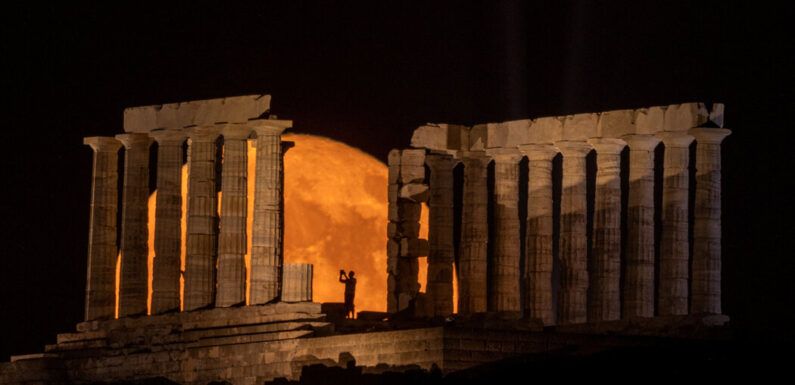
Stargazers and astrophiles from Los Angeles to Istanbul rushed outdoors to see the first supermoon of the year on Monday night. It did not disappoint.
The supermoon, which was flush with amber and red tones, was 14,000 miles closer to earth than typical full moons. A supermoon — the term was coined in 1979 by the astrologer Richard Nolle, and it is not an official astronomical term — can be about 17 percent larger and 30 percent brighter than when a full moon is at apogee, or its farthest point from Earth.
Here are some quick facts and images of the supermoon as it was seen around the world.
From Monday night into Tuesday morning, the supermoon was the talk on social media with enthusiasts sharing images of it along skylines and above landmarks.
In some locations, including in Kansas City, Mo., the supermoon provided a unique backdrop to firework shows on the eve of the U.S. Independence Day.
While the supermoon was seen in full by many, in some cities it was obscured by clouds and other weather, including in Rome, where clouds partly covered it as it was photographed over the Forum.
July’s full moon, also called the buck moon, received its name from the antlers on male deer that can grow as much as a quarter of an inch per day during this time of year, according to the Farmers’ Almanac, the collection of folk wisdom and factoids.
The full moon this month is also sometimes called a thunder moon because of the frequent thunderstorms that are associated with early summer, NASA said.
Native American tribes also gave names to each moon, to mark a particular point in the year, according to the Western Washington University. Some used words to describe the moon’s color, calling it a raspberry moon or a ripe corn moon, while others linked usual summer weather conditions, naming it a hot moon.
Monday night’s supermoon was the first of four this year. Two more will come in August and another in September, according to NASA.
The final supermoon of 2022, the Sturgeon Moon, swept social media last August. Its presence in the sky drew hordes of people and thrilled stargazers.
Derrick Bryson Taylor is a general assignment reporter. He previously worked at The New York Post’s PageSix.com and Essence magazine.
Source: Read Full Article